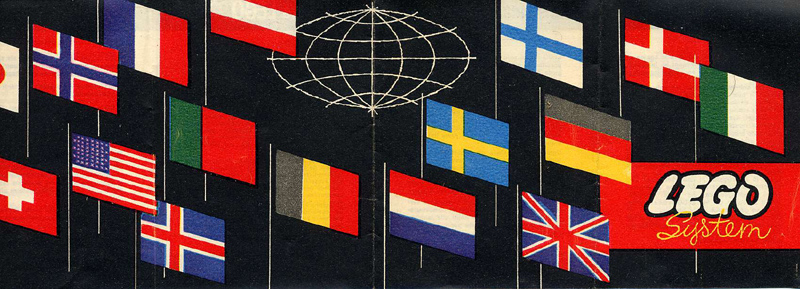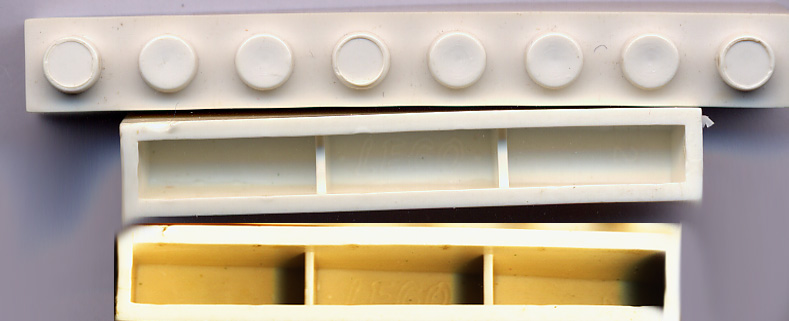
The 1X6 and 1X8 bricks were introduced in 1954. The first version corresponds to vs02b of the 1X2 brick.
The first versions (1X6vs01 and 1X8vs01) are illustrated below. The studs are full (not hollow) and bear no LEGO logo on top. The underside is flat, with two cross suports between which is inscribed the LEGO "dogbone" logo.
Under the first stud of the bricks is inscribed the mold number. Both types were likely molded from a single mold, because their numbers don't overlap (nr.1, 2, 3, 7, 8 are 1X6s; nr.4, 6, 10, 11, 12 are 1X8s).
An important characteristic of this mold cycle is the use of ejector pins over the studs. Plastic intrusions or misalignment on some or all makes the sides of the respective studs seem taller than the top center - as is the case for studs nrs 1, 4 and 8 of the 1X8 brick depicted below.
NOTE: Named beams made with this brick type were sold in Portugal ca 1958, after it had been replaced by vs02.

New molds with hollow studs were introduced in 1956/57. The hollow has a diameter of ca 3mm.
The "LEGO" logo is inscribed sideways on the studs. 1X8vs01 had only two cross supports; 1X8vs02 now has three cross suports (image below) while 1X6vs02 kept the previous two.
Mold numbers were now inscribed between studs nr.1 and nr.2. On 1X8vs02 numbers from "1" to "11" are known. There are also unumbered bricks.

New molds were made circa 1960. That mold cycle was used to decrease by ca 1mm the diameter of the hollow of all bricks, to avoid the fragility of stud walls too thin.
The figure below compares (on top) 1X6vs02, which had hollows of about 3mm diameter, with the newer 1X8vs03 which had smaller hollows, with beveled edges often apparent. The beveling is probably a mark of ejector pins.
